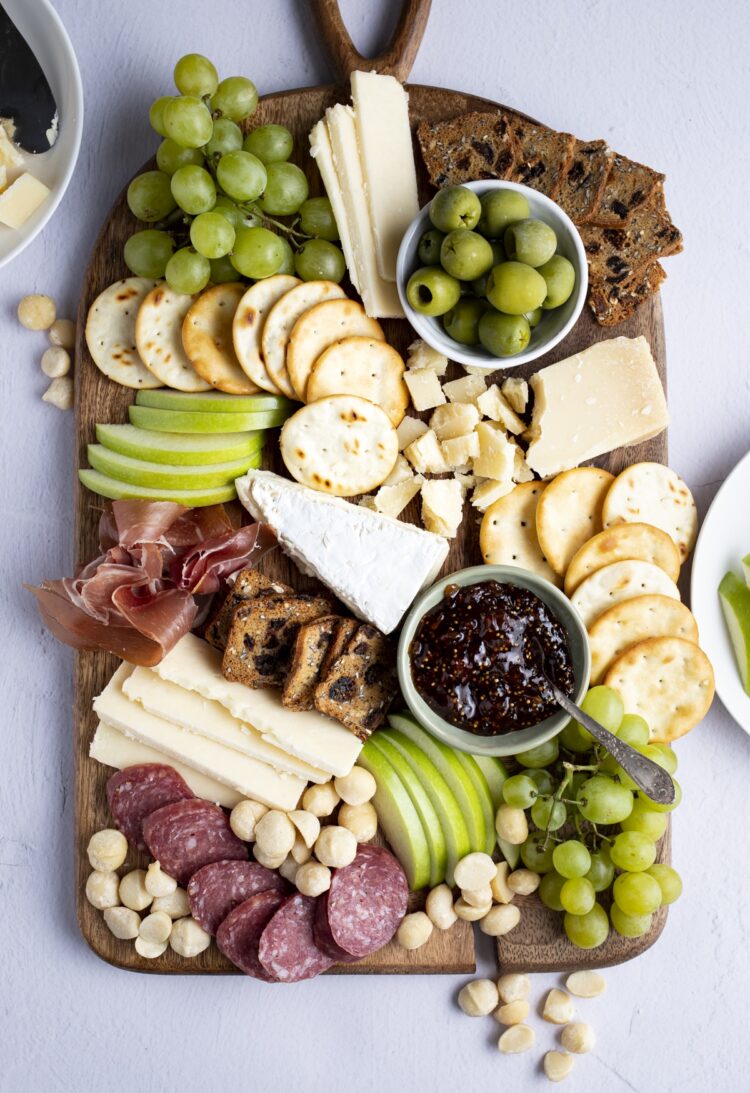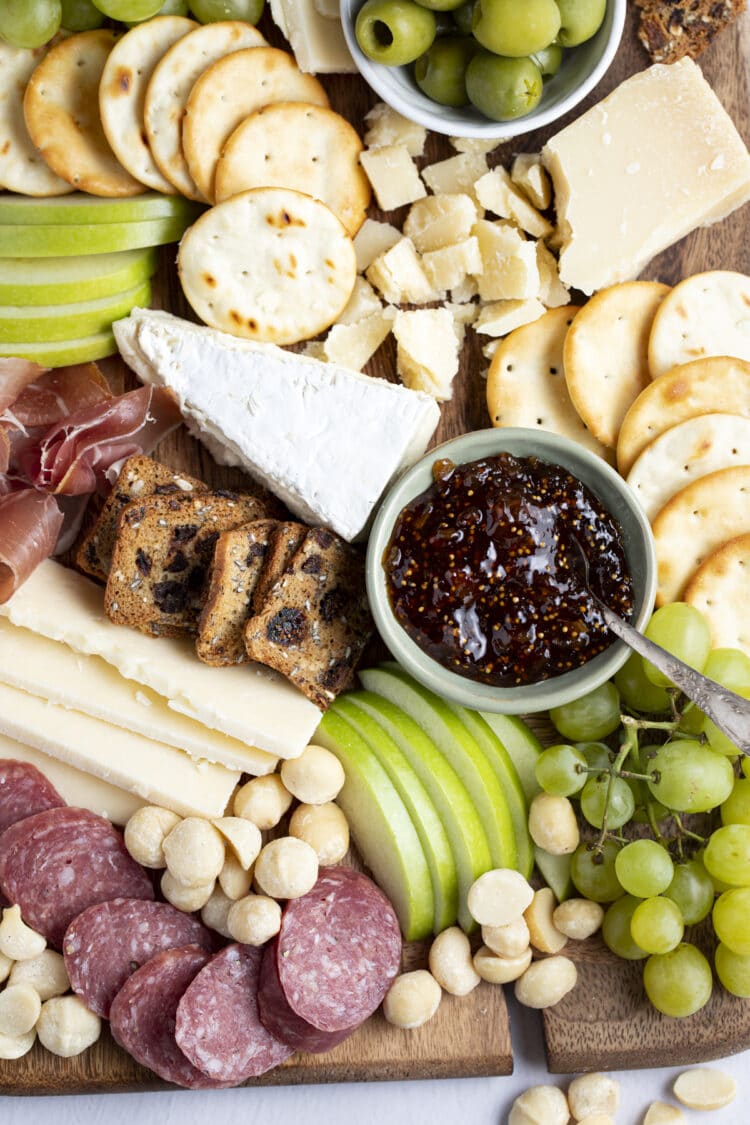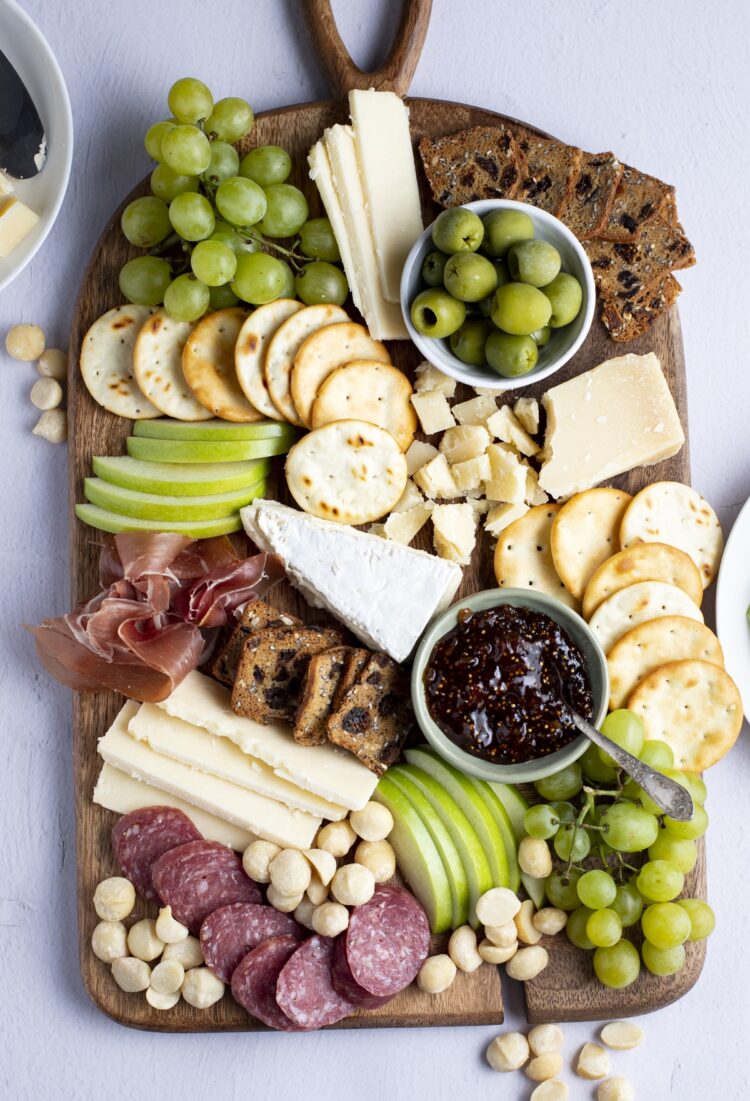How to Build a Winter Charcuterie Board

In recent years, this gorgeous and trendy appetizer has become a go-to option for all different kinds of parties and gatherings. Charcuterie boards are made with colorful, eye-catching ingredients that pull you in and delicious, complementary flavors that keep you circling back to the buffet table. These beautiful boards may seem difficult to make, but they’re actually something anyone can create! Below, we’ll show you how to build a winter charcuterie board that is sure to impress all of your guests this holiday season.
Charcuterie Origins

Charcuterie dates back to 15th century France, describing shops that sold preserved meats. The name itself roughly translates to “cooked meats”. Charcuterie boards are meant to present different methods of preserved meats, as well as flavor and texture pairings to go with each, which is why they’re so colorful and diverse! Below, we’ll go over what unique ingredients to add and how to build the perfect winter charcuterie board!
What to Add to Your Appetizer

Fit your tastes (and the tastes of your guests) by crafting the perfect winter charcuterie board for your next get together. Be sure to let us know what combinations you used in the comment section, too!
Meats
Preserved meat is the base of charcuterie, and every other ingredient should be included with your meat in mind. For example, saltier, more savory meats like sausage and salami are well paired with sweeter, softer cheeses and spreads, while buttery prosciutto or ham is fantastic with a sharp cheese like parmesan and more savory spreads such as mustard. I usually offer a little bit of each to suit each of my guest’s preferences.
Cheeses
Cheese is the perfect pairing for cured meats, which is why you’ll almost always find cheese on your board. I like to go for 2-3 different types (one soft, like brie, one hard, like parmesan, and sometimes one in between, such as gouda) to cover all flavor profiles and preferences.
Grains
Grains are the perfect vehicle for your toppings and spreads. Not only that, but they also offer their own flavors and beneficial nutrients like fiber and folate. You can go for something simple like our choice of multi-grain crackers, or you can try a more eccentric cracker like Spicy Whole Grain Crackers. You can even use bread instead– like our No-Yeast Flatbread. It’s so easy to make and simply to die for!
Nuts
Nuts add a new flavor profile, usually complementing the meats and cheeses, as well as offering some fantastic nutrients such as omega-3’s and protein. We’ve used almonds on our platter, but you can do any nut, such as walnuts, pistachios, or peanuts.
Fruits and Veggies
Adding produce to your board will bring light flavors, bright colors, and healthy options to the table. Sweet fruits like grapes, berries, apples, or melon are easy to eat and pair very well with salty meats and savory cheeses. Veggie sticks are a great earthy-tasting option to balance out the salty, sweet, and savory flavors of the meat and cheese. And you can even add olives as another savory addition to your platter.
Spreads
When it comes to spreads, I like to include different flavors, such as sweetness from fig jam, honey, or marmalade, as well as some savory additions from mustards, hummus, or even our Easy Classic Bruschetta. They should be included to compliment the other ingredients, always contributing to the perfect bite!
How To Build the Perfect Winter Charcuterie Board

Now that you know what you’ll need, all we need to do is build it! I always see such beautiful boards on Pinterest, and after some practice I’ve figured out how to do it on my own.
Start with the larger main players, such as cheese blocks and meats. I’ll also choose a good spot for the spreads at this time if I’m serving them in bowls, as they may take up a good amount of space. Make sure to spread them evenly over a good-sized board, then start to fill in the empty space. Go for the crackers first and fan them out nicely in 2-3 different areas, then you can start to fill in with fruits, vegetables, and nuts, making sure to diversify the colors and textures around the board.
Think of your charcuterie board as a work of artt. There’s no wrong way to do it. You can keep it more organized or go the messier-looking route. With all of the yummy flavors, unique textures, and gorgeous colors, you really can’t go wrong! Have fun with it… and enjoy!